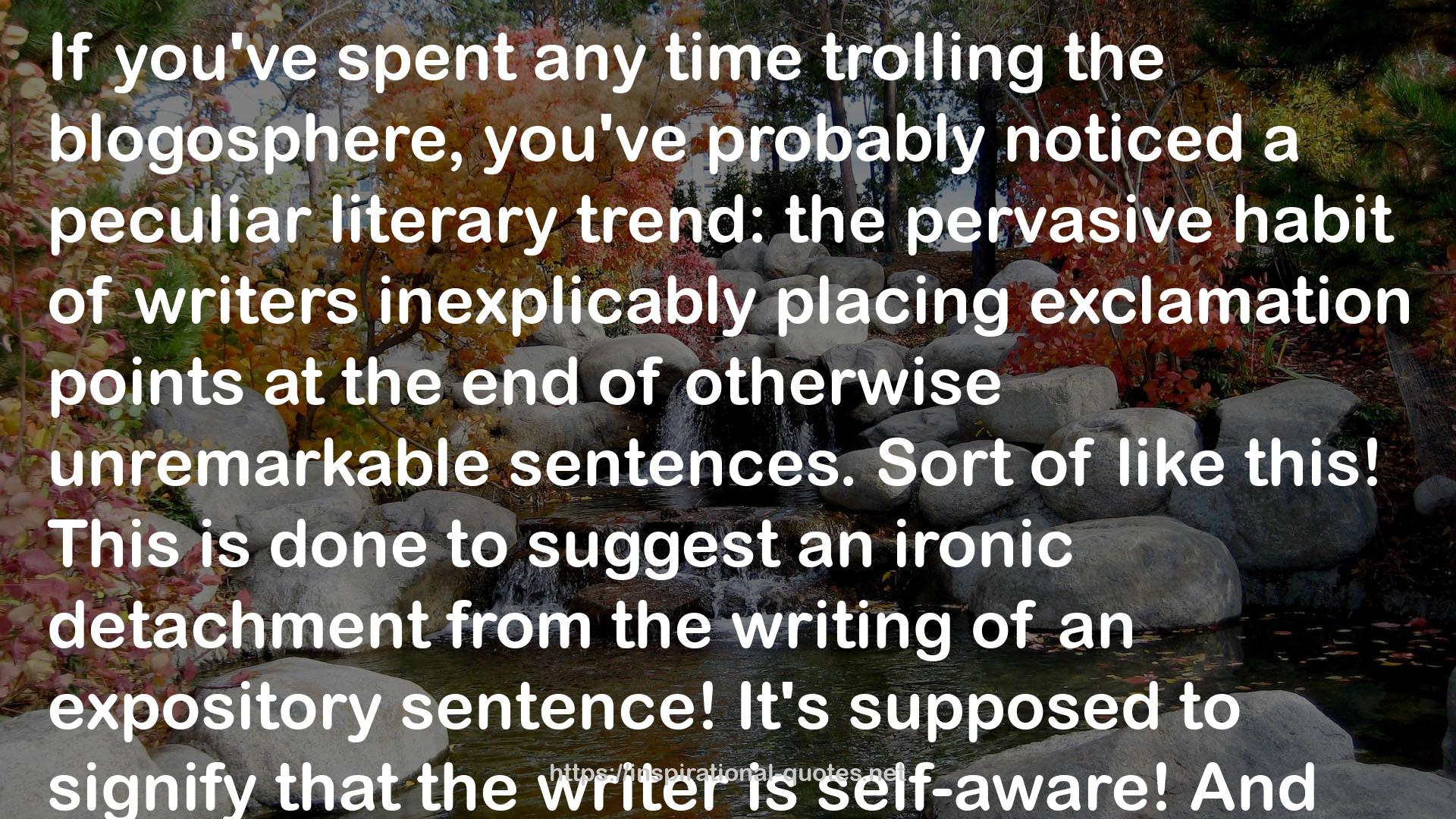" If you've spent any time trolling the blogosphere, you've probably noticed a peculiar literary trend: the pervasive habit of writers inexplicably placing exclamation points at the end of otherwise unremarkable sentences. Sort of like this! This is done to suggest an ironic detachment from the writing of an expository sentence! It's supposed to signify that the writer is self-aware! And this is idiotic. It's the saddest kind of failure. F. Scott Fitzgerald believed inserting exclamation points was the literary equivalent of an author laughing at his own jokes, but that's not the case in the modern age; now, the exclamation point signifies creative confusion. All it illustrates is that even the writer can't tell if what they're creating is supposed to be meaningful, frivolous, or cruel. It's an attempt to insert humor where none exists, on the off chance that a potential reader will only be pleased if they suspect they're being entertained. Of course, the reader isn't really sure, either. They just want to know when they're supposed to pretend to be amused. All those extraneous exclamation points are like little splatters of canned laughter: They represent the "form of funny," which is more easily understood (and more easily constructed) than authentic funniness. "
― Chuck Klosterman , Eating the Dinosaur
